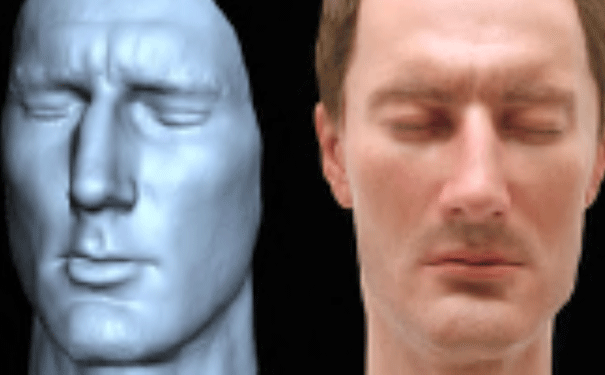A human face has been physically cloned onto an animatronic character.
An ambitious project led by computer scientist Bernd Bickel, which involves a team of material designers, imagineers and animators from Disney Research, Zurich, has seen the development of a new physical face cloning method. The process has enabled the creation of personalised characters based on actual individuals with a realism and accuracy that has never before been possible.
“We are naturally intrigued by the prospect of creating virtual humans in the likeness of ourselves — and it is not far-fetched to say that this is also a driving force for computer graphics research,” say the researchers in their paper presented at the 39th International Conference and Exhibition on Computer Graphics and Interactive Techniques in Los Angeles. “We propose a complete process for designing, simulating and fabricating synthetic skin for an animatronic character that mimics the face of a given subject and its expressions.”
Animatronics is the use of robotics to create cinematic special effects and was developed by Walt Disney himself in the 1960s. Who could forget the big, mechanical Great white shark from Jaws or the dinosaurs of Jurassic Park? As great as these blockbusters were for their time, there are now more advanced animatronic methods to achieve much greater levels of realism.
The researchers from the current study explain that the face has always been, and still is, the most difficult and labour-intensive part of rendering realistic animatronic characters, owing to its expressive power.
“An animatronic character has to produce a vast range of facial expressions, each having different deformations and wrinkles,” they say. “Manually designing the shape and material properties of a single skin that is able to achieve all these targets is clearly a formidable task.” Automating the process of face cloning, to increase realism, was therefore the goal of their work.

- Left: Scanned 3D geometry of subject’s face. Right: Final animatronic figure with fabricated skin. Image: Bickel et al, Disney Research, 2012
During the process the 3D facial expressions of a human subject are scanned. The team then use an optimisation process to determine the elastic properties and shape of a synthetic skin material to find one that best matches the subject’s actual face. With these measurements they use a physics-based simulation to predict the behaviour of the cloned face while it gets controlled by an underlying robotic structure.
The outcome is an ultra-realistic animatronic figure that approximates the shape and unique characteristics of the real human subject. From each individual wrinkle on the subject’s frowning forehead to the subtle variation in skin thickness across the face, there is an uncanny degree of fidelity and resemblance, achieved by using this novel method.
Source: Eurekalert






